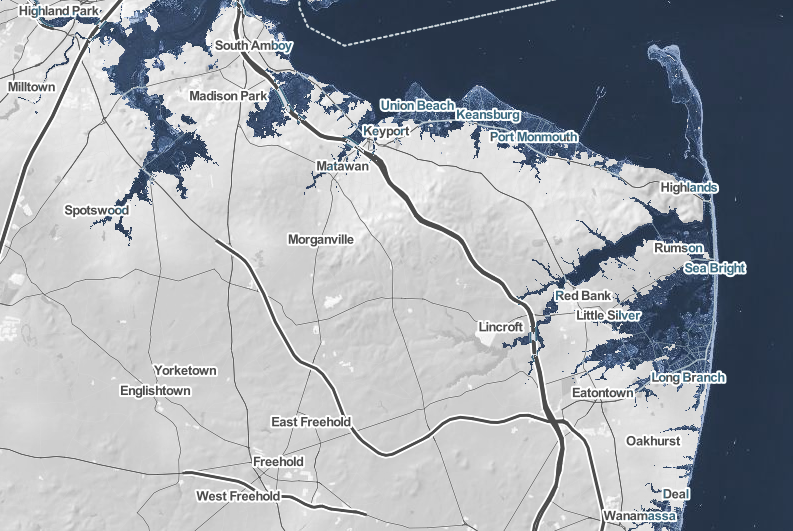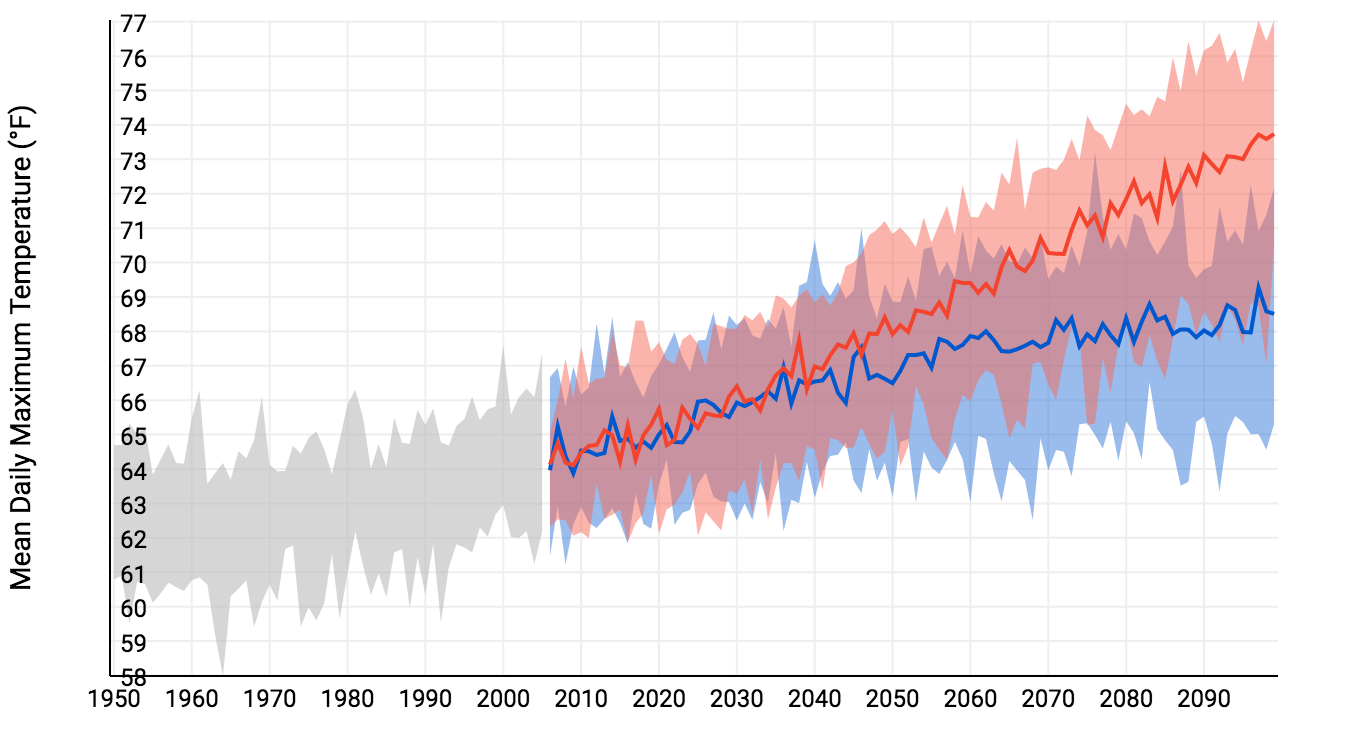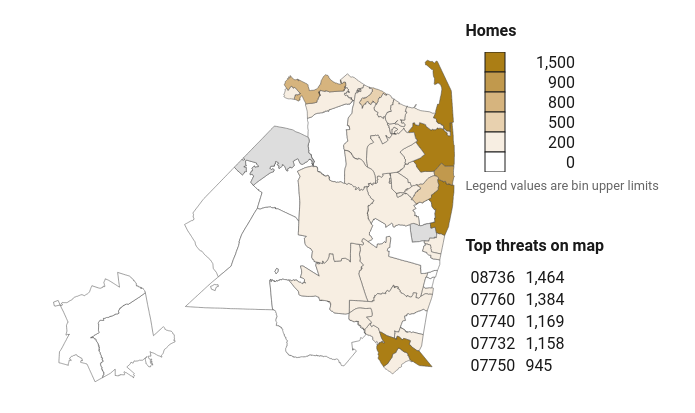FUTURE: rising sea levels, strengthening storms, and changing precipitation in Monmouth County3/23/2018 Climate changes and the local environment: Monmouth County spans across the lower portion of the neck of New Jersey, extending to the eastern coastline. A 2011 report from Columbia University identifies sea level, storm surge, and precipitation, all of which are expected to increase within the next century, as primary climate change associated concerns for New Jersey’s coastal areas. High concentrations of long-lived greenhouse gases like carbon dioxide and methane in the atmosphere are causing warmer global temperatures. The result is thermal expansion and melting glacier mass that contribute to an increase in sea levels. Sea levels along the Jersey Shore have already risen 0.36 meters in the last century, and that number will increase sixfold to 2 meters by 2100. Moreover, a 2ºC increase in global temperatures will further this sea level increase to 4.7 meters. The renown beaches of the area will cease to exist as a result of sea level rise, negatively affecting marine life. Resulting higher flood levels will also disrupt wetlands and terrestrial life further in the county as they become open water. Plant composition and communities will, in fact, change, a disruption that will resonate with other organisms. Warming global temperatures will also increase the amount of precipitation the county will experience. Early snowmelt will make for wetter winter and spring months though this will actually intensify summer dryness. The warmer ocean surface temperatures are also likely to increase both the frequency and intensity of hurricanes that hit the area. Hurricanes increase both in frequency and in strength with warming sea surface temperature (SST). Projections predict more hurricanes like 2011’s Irene and 2012’s Sandy, both of which disrupted activity in Monmouth County, mostly due to flooding. How we know: These projections primarily rely on two tools that are freely accessible online: the National Oceanic and Atmospheric Administration (NOAA) Climate Explorer app, and the Climate Central Surging Seas, Mapping Choices app. The Climate Explorer tool uses weather information recorded by meteorological instruments at weather stations to reconstruct past climate changes. It uses supercomputer simulations of future climate changes under both high and low emissions scenarios. The Surging Seas tool combines historic flood statistics and local sea level trends with global scenarios of sea level increases, which were compiled in the 2014 U.S. National Climate Assessment. Human consequences: The continuing increase in global temperatures will impact important industries, local businesses, and homes significantly as sea levels rise due to warming oceans and melting glacier mass. Beach erosion will contribute to much of the blow the region receives since they serve as a great source of revenue for the area by attracting tourists and allowing the growth of local businesses. The county’s coastal lakes are also integral in its commercial and recreational activities, and significant changes in the waters present an alarming concern for Monmouth county inhabitants. Notably, the shellfish industry that makes up 66% of New Jersey’s commercial fishing revenue is at risk as the population of such organism decrease as a result of ocean acidification. Similarly, homes along the coast will be destroyed due to greater storm surges. Over 9,000 homes ($5 billion in property value) housing 18,000 people will be at a 97% risk if Monmouth County sea levels reach the projected 4.7 meters. Thus, the livelihood of the county’s coastal inhabitants is in danger due to anthropogenic global warming leading to rising sea levels and flooding. The impacts of these climate change related changes will be especially hard-felt among low-income communities who have a high vulnerability. Moreover, hazardous waste sites that in areas predicted to experience high level of flooding present an additional worry for Monmouth County as flood waters can release harmful materials. While 2100 and the projected sea level and flooding changes seem far away, the threat they pose calls for immediate action. New Jersey has taken several mitigation measures to increase the resilience of its inhabitants. However, these efforts only confer higher taxes on the population in order to push forward rebuilding initiatives. Further reading: Article author: Armelle Déjoie, Georgetown University
Article editor: Dr. Dagomar Degroot, Georgetown University
4 Comments
9/21/2019 05:28:03 am
The rising sea levels are really scary. To be honest, I cannot even think of something to fend them off it. Of course, I am not someone who needs to be concerned with it, but still, it really terrified me. I want the world to last for as long as it is able. It is a tough task, but humanity needs to learn how to be better people. I want to be the catalyst for change, that is what I want to be.
Reply
Leave a Reply. |




 RSS Feed
RSS Feed